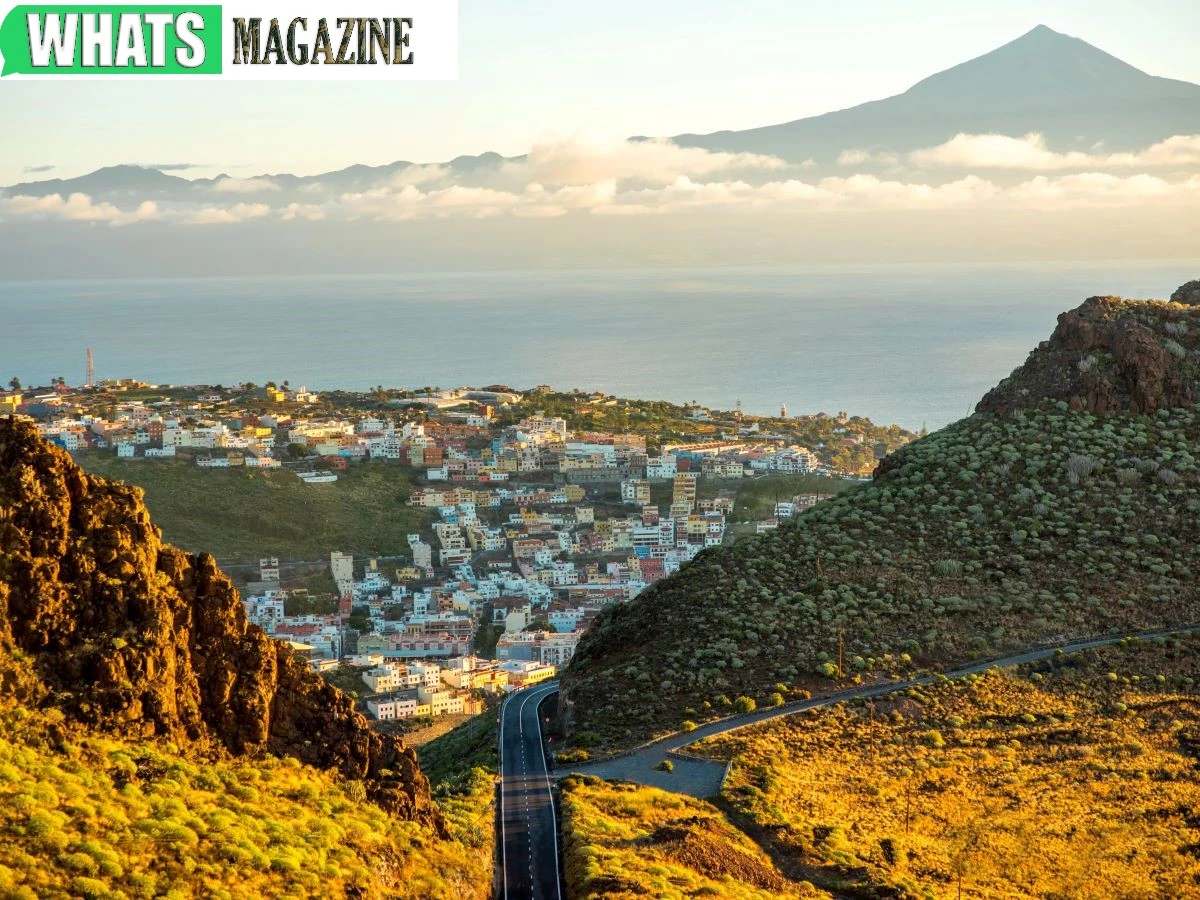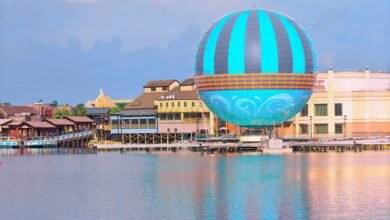In this article
Key Takeaways:
- The Sierra Nevada Mountains offer breathtaking landscapes for nature lovers and adventure seekers.
- The Alhambra Palace in Granada showcases the rich history and architecture of the Nasrid dynasty.
- The Costa del Sol is a popular destination known for its beautiful beaches and vibrant nightlife.
- Flamenco is a passionate and soulful art form deeply ingrained in Spanish culture.
- Tapas and sangria are traditional culinary delights that should not be missed.
- Bullfighting is a controversial tradition with complex historical roots.
- The white villages of Andalusia offer charming glimpses into traditional Spanish village life.
- Baelo Claudia is an ancient Roman site that provides insight into the region’s history.
- Jerez is renowned for its production of sherry wine and the Royal Andalusian School of Equestrian Art.
- The carnival of Cadiz and the Semana Santa processions in Seville are vibrant celebrations of Spanish culture.
- The Feria de Malaga is a lively summer festival that showcases Andalusian culture.
1. Exploring the Enchanting Landscapes of Southwest Espanol
1.1 Discover the Breathtaking Beauty of the Sierra Nevada Mountains
The Sierra Nevada Mountains in Southwest Espanol are a paradise for nature lovers and adventure seekers. With towering peaks, deep valleys, and stunning alpine landscapes, this mountain range offers a breathtaking experience like no other.
One of the highlights of the Sierra Nevada Mountains is Mulhacén, the highest peak on the Iberian Peninsula. It stands at an impressive elevation of 3,478 meters and provides panoramic views of the surrounding area. Hiking to the summit of Mulhacén is a challenging yet rewarding endeavor that will leave you in awe of the majestic beauty of the region.
For those who prefer a slightly less strenuous experience, the Sierra Nevada National Park offers a wide range of activities such as mountain biking, horseback riding, and birdwatching. The park is also home to a diverse range of flora and fauna, including the rare Spanish ibex and the golden eagle.
1.2 Unveiling the Mysteries of the Alhambra Palace
The Alhambra Palace, located in the city of Granada, is a UNESCO World Heritage site and one of the most visited tourist attractions in Spain. This stunning palace complex showcases the rich history and architectural brilliance of the Nasrid dynasty, who ruled the region during the 13th and 14th centuries.
The Alhambra is a true masterpiece of Islamic art and design. Its intricate carvings, vibrant tilework, and lush gardens create a serene and enchanting atmosphere. Exploring the palace’s various sections, such as the Generalife Gardens, the Nasrid Palaces, and the Alcazaba Fortress, is like stepping back in time.
To fully appreciate the beauty of the Alhambra, it is advisable to reserve your tickets in advance, as the palace receives a high volume of visitors throughout the year. Guided tours are also available, providing in-depth insights into the history and significance of this architectural gem.
1.3 Diving into the Tranquil Waters of the Costa del Sol
The Costa del Sol, meaning “Coast of the Sun,” is a stunning stretch of coastline along the Mediterranean Sea. Known for its beautiful beaches, charming coastal towns, and vibrant nightlife, it is a popular destination for both locals and international tourists.
The Costa del Sol offers a wide range of water activities, such as swimming, snorkeling, and sailing. There are also several world-class golf courses in the area, making it a haven for golf enthusiasts. The beaches here are known for their pristine golden sands and crystal-clear waters, perfect for relaxing under the warm Spanish sun.
For a taste of traditional Andalusian culture, visit the picturesque town of Marbella. With its narrow cobblestone streets, whitewashed buildings adorned with vibrant flowers, and the charming Plaza de los Naranjos, Marbella exudes a unique charm that is hard to resist.
2. Immerse Yourself in the Vibrant Spanish Culture
2.1 Indulge in Traditional Flamenco Music and Dance
Flamenco is an integral part of Spanish culture and Southwest Espanol offers the perfect opportunity to immerse yourself in this passionate and soulful art form. Originating from Andalusia, Flamenco is a combination of music, dance, and singing that evokes a range of emotions from joy to sorrow.
There are numerous flamenco venues throughout the region where you can witness the intensity and skill of professional flamenco dancers and musicians. The performances are often accompanied by live guitar music and the heart-wrenching vocals of the cantor.
To truly appreciate flamenco, consider taking a flamenco dance or guitar lesson. Many flamenco schools in Southwest Espanol offer classes for beginners as well as more advanced students. This will give you a deeper understanding of the rhythm, technique, and cultural significance of this captivating art form.
2.2 Savor the Authentic Flavors of Tapas and Sangria
No visit to Southwest Espanol would be complete without indulging in the traditional culinary delights of the region. Tapas, small plates of savory dishes, are a staple in Spanish cuisine and a fantastic way to sample a variety of flavors.
From patatas bravas (crispy fried potatoes with a spicy tomato sauce) to gambas al ajillo (garlic prawns), each tapa is bursting with flavor and showcases the richness of Spanish ingredients. Pair your tapas with a refreshing glass of sangria, a traditional Spanish drink made with red wine, fruits, and spices.
For a truly immersive experience, explore the local markets and food stalls where you can taste regional specialties directly from the source. The Mercado Central de Atarazanas in Malaga is a bustling market that offers a wide range of fresh seafood, fruits, vegetables, and local delicacies.
2.3 Discover the Rich History of Bullfighting
Bullfighting, or corrida de toros, has been a controversial yet deeply ingrained tradition in Spanish culture for centuries. While it is a topic of debate, understanding its history and cultural significance can provide valuable insights into the Spanish way of life.
Southwest Espanol is home to several prestigious bullrings where you can witness this ancient spectacle firsthand. Ronda, known for its breathtaking gorge and historic old town, is famous for its bullring, Plaza de Toros de Ronda. Built in 1785, this bullring offers guided tours that provide a fascinating glimpse into the world of bullfighting.
It is important to note that bullfighting is a highly controversial practice, and opinions about its ethics and treatment of animals vary. It is essential to approach this topic with respect and an open mind, recognizing that it is a part of Spanish culture with complex historical roots.
3. Unraveling the Hidden Gems of Southwest Espanol
3.1 Exploring the Charming White Villages of Andalusia
Andalusia is known for its picturesque white villages, or pueblos blancos, which dot the hillsides and offer a glimpse into traditional Spanish village life. These villages are characterized by whitewashed houses with terracotta roofs, narrow winding streets, and stunning views of the surrounding countryside.
One of the most famous white villages is Ronda, situated on a dramatic clifftop overlooking the El Tajo Gorge. The town is renowned for its Puente Nuevo, a spectacular bridge that spans the gorge and connects the old and new parts of Ronda.
Another must-visit white village is Mijas, located just a short drive from the bustling coastal city of Malaga. Known for its charming donkey taxis, narrow streets lined with colorful flowers, and breathtaking views of the Mediterranean Sea, Mijas provides a peaceful escape from the tourist crowds.
3.2 Unearthing the Ancient Roman Ruins of Baelo Claudia
Located on the Costa de la Luz, Baelo Claudia is an ancient Roman site that offers a fascinating glimpse into the region’s rich history. Founded in the 2nd century BC, Baelo Claudia was a prosperous Roman city known for its thriving fishing industry and production of garum, a popular Roman fish sauce.
Today, visitors can explore the well-preserved ruins of Baelo Claudia, including the impressive theater, the market square, and the temple dedicated to the Roman god, Neptune. The site also offers a museum where you can learn more about the history and daily life of the Roman inhabitants.
With its stunning coastal location and intriguing archaeological remains, Baelo Claudia is a must-visit destination for history enthusiasts and anyone interested in ancient civilizations.
3.3 Delving into the Fascinating World of Sherry Wine in Jerez
The city of Jerez, located in the province of Cadiz, is famous for its production of sherry wine. This fortified wine has been produced in the region for centuries and has gained international recognition for its unique flavors and craftsmanship.
A visit to Jerez offers the opportunity to tour traditional sherry bodegas, where you can learn about the wine-making process and sample a variety of sherries, ranging from dry and crisp to sweet and nutty. The bodegas also often offer flamenco shows, combining two of the region’s most iconic cultural expressions.
In addition to sherry, Jerez is also known for its Andalusian horses and equestrian tradition. The Royal Andalusian School of Equestrian Art, located in Jerez, offers exhibitions and shows featuring the graceful dance-like movements of the famous Andalusian horses.
4. Experiencing the Festivals and Traditions of Southwest Espanol
4.1 Join the Spectacular Carnival Celebrations in Cadiz
The city of Cadiz comes alive during the carnival season, with vibrant street parades, colorful costumes, and lively music filling the air. The Carnival of Cadiz is one of the largest and most important carnivals in Spain, attracting thousands of visitors from all over the world.
The carnival is a celebration of music, dance, and satire, with groups of performers known as chirigotas and comparsas taking to the streets to entertain the crowds with their witty and often politically charged songs and skits. The atmosphere during the carnival is infectious, and you can’t help but be swept up in the energy and excitement.
Whether you choose to simply observe the festivities or actively participate by dressing up in costume and joining the parades, the Carnival of Cadiz is an unforgettable experience that showcases the region’s vibrant cultural heritage.
4.2 Witness the Passionate Semana Santa Processions in Seville
Semana Santa, or Holy Week, is one of the most important religious events in Spain, and nowhere is it celebrated with more fervor and passion than in the city of Seville. Throughout the week leading up to Easter Sunday, the streets of Seville are filled with processions of religious brotherhoods carrying elaborately decorated floats.
Each procession represents a different biblical scene or religious figure, and the floats are often adorned with flowers, candles, and religious icons. The processions are accompanied by solemn music and the rhythmic beating of drums, creating a powerful and emotionally charged atmosphere.
Witnessing the Semana Santa processions in Seville is a unique and deeply moving experience. It offers a glimpse into the strong religious traditions and cultural heritage of the region, as well as the devotion and dedication of the participants.
4.3 Celebrate the Colorful Feria de Malaga with Locals
The Feria de Malaga is one of the largest and most vibrant summer festivals in Spain. Taking place in August, it is a celebration of Andalusian culture, music, and gastronomy that attracts visitors from all corners of the globe.
The festival kicks off with a spectacular fireworks display, followed by a week of festivities including live music performances, flamenco shows, traditional horse parades, and a plethora of food and drink stalls.
One of the highlights of the Feria de Malaga is the decorated casitas and small marquees where locals and visitors come together to eat, drink, and dance the sevillanas, a traditional Andalusian dance. The atmosphere in the casitas is jovial and welcoming, and joining in the celebrations with the locals is a fantastic way to experience the true spirit of the festival.
Remember, when exploring Southwest Espanol, take the time to engage with the locals, embrace the cultural traditions, and savor the unique experiences that this region has to offer. Whether you find yourself mesmerized by the beauty of the Sierra Nevada Mountains, enchanted by the intricate details of the Alhambra Palace, or immersed in the captivating rhythms of flamenco, Southwest Espanol is sure to leave a lasting impression on your heart and mind.
FAQ
Question: What is the Sierra Nevada Mountains? – The Sierra Nevada Mountains in Southwest Espanol are a paradise for nature lovers and adventure seekers, offering breathtaking landscapes, towering peaks, deep valleys, and stunning alpine scenery.
Question: What is the Alhambra Palace? – The Alhambra Palace is a UNESCO World Heritage site located in Granada, showcasing the rich history and architectural brilliance of the Nasrid dynasty. It is a stunning palace complex with intricate carvings, vibrant tilework, and lush gardens.
Question: What is the Costa del Sol known for? – The Costa del Sol is a stretch of coastline along the Mediterranean Sea, known for its beautiful beaches, charming coastal towns, vibrant nightlife, and a wide range of water activities such as swimming, snorkeling, and sailing.
Question: What is Flamenco? – Flamenco is a passionate and soulful art form deeply ingrained in Spanish culture, originating from Andalusia. It is a combination of music, dance, and singing that evokes a range of emotions from joy to sorrow.
Question: What are Tapas and Sangria? – Tapas are small plates of savory dishes and are a staple in Spanish cuisine. They offer a variety of flavors and showcase the richness of Spanish ingredients. Sangria is a traditional Spanish drink made with red wine, fruits, and spices, often paired with tapas.
Question: What is Bullfighting? – Bullfighting, or corrida de toros, is a controversial tradition with complex historical roots in Spanish culture. It involves a spectacle of bull versus human, and while it is a topic of debate, it offers insights into the Spanish way of life.
Question: What are the White Villages of Andalusia? – The White Villages, or pueblos blancos, are picturesque villages in Andalusia characterized by whitewashed houses with terracotta roofs, narrow winding streets, and stunning views of the surrounding countryside. They offer a glimpse into traditional Spanish village life.
Question: What is Baelo Claudia? – Baelo Claudia is an ancient Roman site located on the Costa de la Luz. It provides insight into the region’s rich history as a prosperous Roman city known for its fishing industry and production of garum, a popular Roman fish sauce.







